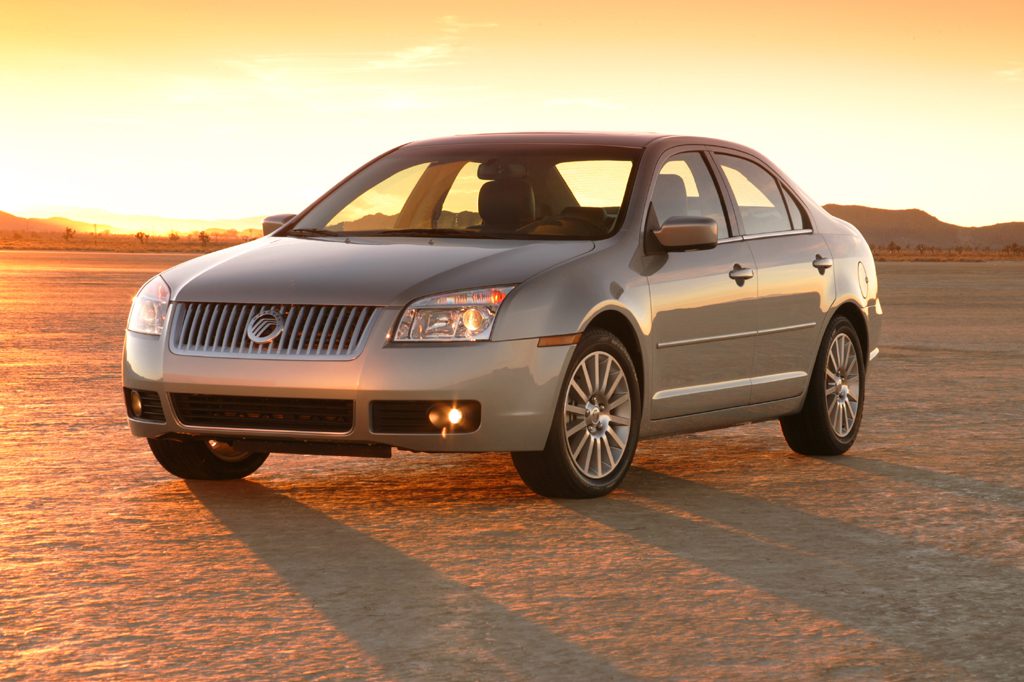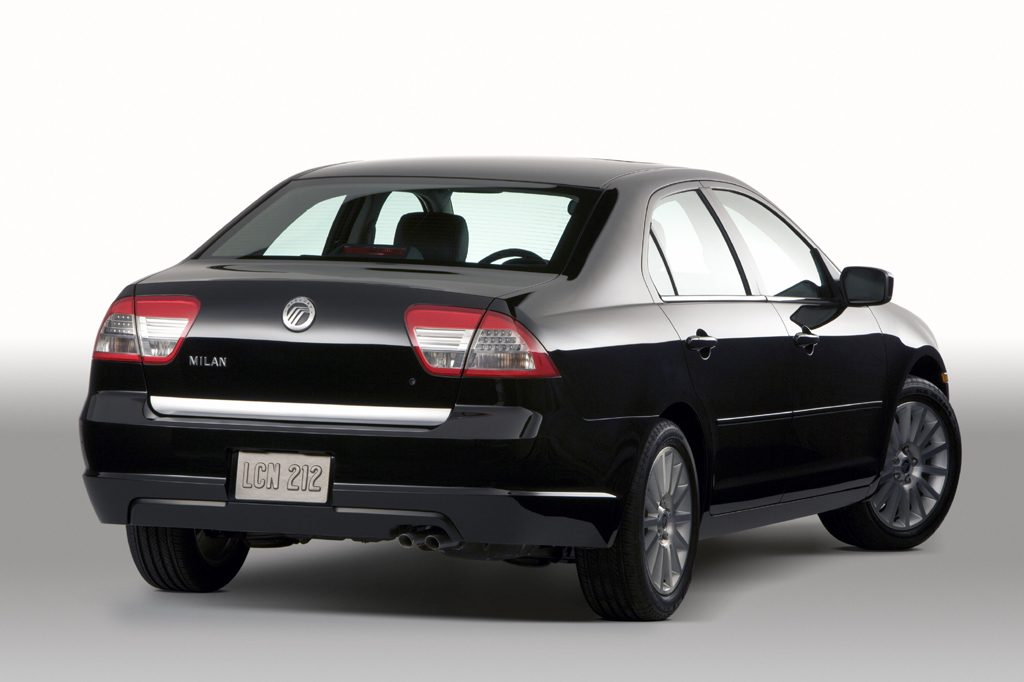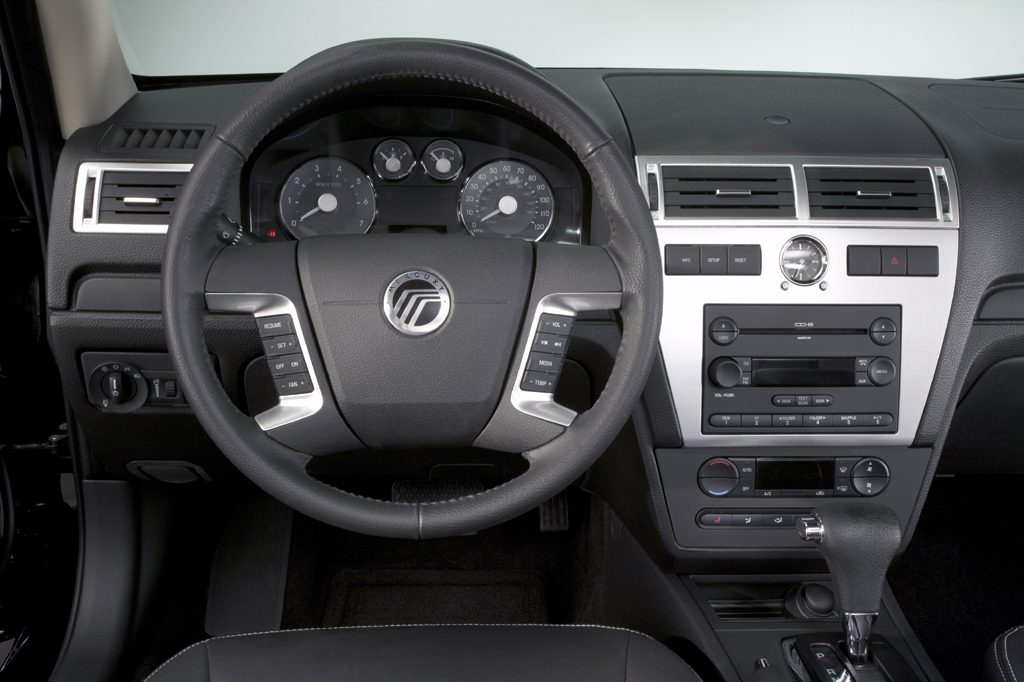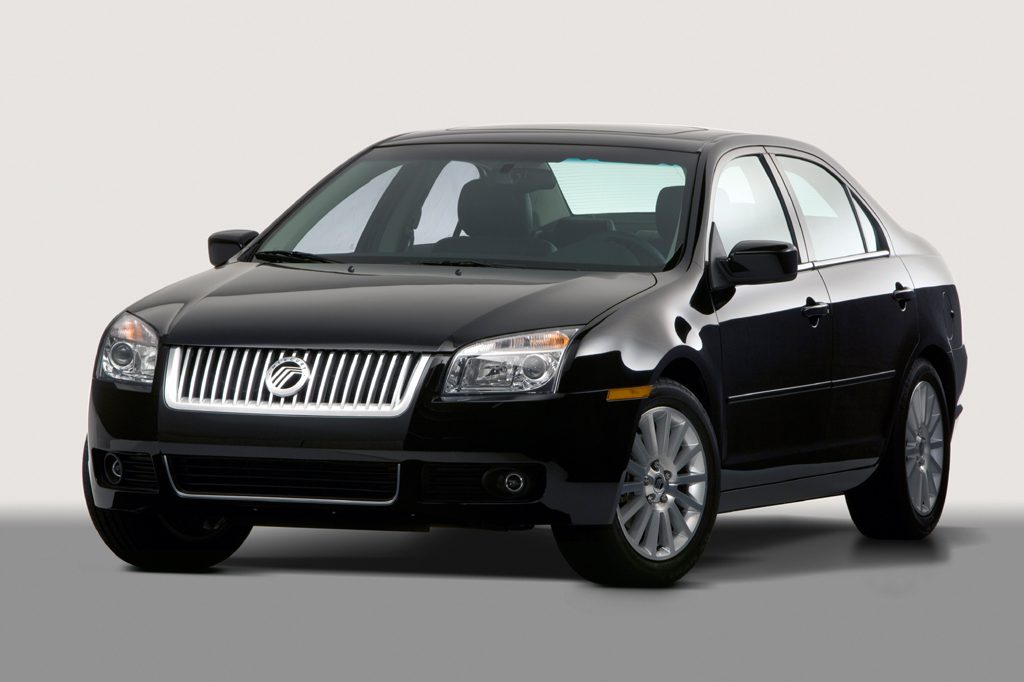| Midsize car; Built in Mexico |
|
|
| Good condition price range: $6,800 – $21,000* |

2006 Mercury Milan

2006 Mercury Milan

2006 Mercury Milan

2006 Mercury Milan
| Pros: |
|
| Cons: |
|
Milan and Fusion both earn Recommended ratings, against the Accord and Camry. They match those perennial class leaders for roominess and road manners, if not engine refinement and cabin design. Milan has no real advantage over a comparably-equipped Ford Fusion, which is essentially the same under the skin, though Mercury gave its sedan richer-looking interior appointments. Both are capable midsize sedans that merit consideration.
Overview
Milan replaced the Sable as Mercury’s midsize sedan for 2006. Built on a front-wheel-drive platform like the Sable, the Milan shared its basic architecture with the Ford Fusion and Lincoln Zephyr. All three were based on the Mazda 6 from Ford Motor Company’s Japanese affiliate, but were slightly larger.
Aimed at more youthful buyers, Milan was the most affordable car in Mercury’s lineup. Mercury also said it was the first car in this segment in a decade.
Milan was offered in base and uplevel Premier models, both available with either a 160-horsepower four-cylinder engine or a 221-horsepower V6. The four-cylinder came with a five-speed manual transmission or an optional five-speed automatic. V6 versions used only a six-speed automatic.
Antilock four-wheel disc brakes were optional for the base Milan, standard for Premiers. Traction control was available on V6 versions. Base models had 16-inch wheels, versus 17-inch for Premiers. Standard equipment included a six-way power driver’s seat, CD player, remote keyless entry, and power heated mirrors.
Front torso and head-protecting curtain side airbags were optional, as was a sunroof. Premiers came with leather upholstery and offered a choice of metal or wood interior trim at no extra cost. Two-tone leather was available, too, as were heated front seats. Milan’s rivals included the Honda Accord, Nissan Altima, and Toyota Camry.
Yearly Updates
| 2007 Milan Front torso side airbags, curtain-type airbags and antilock braking became standard on all Milans, rather than optional. Premier sedans could now have all-wheel drive rather than front-wheel drive. A fold-down passenger seat became standard, and V6 models gained traction control. |
| 2008 Milan The Milan was little-changed for 2008, but newly available features included rear obstacle detection and Ford’s Sync voice-activated control for cell phones and MP3 players. |
| 2009 Milan An antiskid system was newly available on the Milan for 2009. Otherwise, this midsize sedan was largely unchanged. |
| 2010 Milan The 2010 Mercury Milan receives more power and freshened styling. A Hybrid version also made its debut. A 175-horsepower 2.5-liter 4-cylinder engine replaced a 160-horsepower 2.3-liter 4-cylinder and was standard on front-drive models. A 240-horsepower 3.0-liter V6 replaced a 221-horsepower 3.0 V6 that could run on E85 ethanol-blended fuel. Hybrids paired a 2.5-liter 4-cylinder gas engine with an electric motor for 191 horsepower total. |
| 2011 Milan The 2011 Mercury Milan was unchanged for its final model year. |
